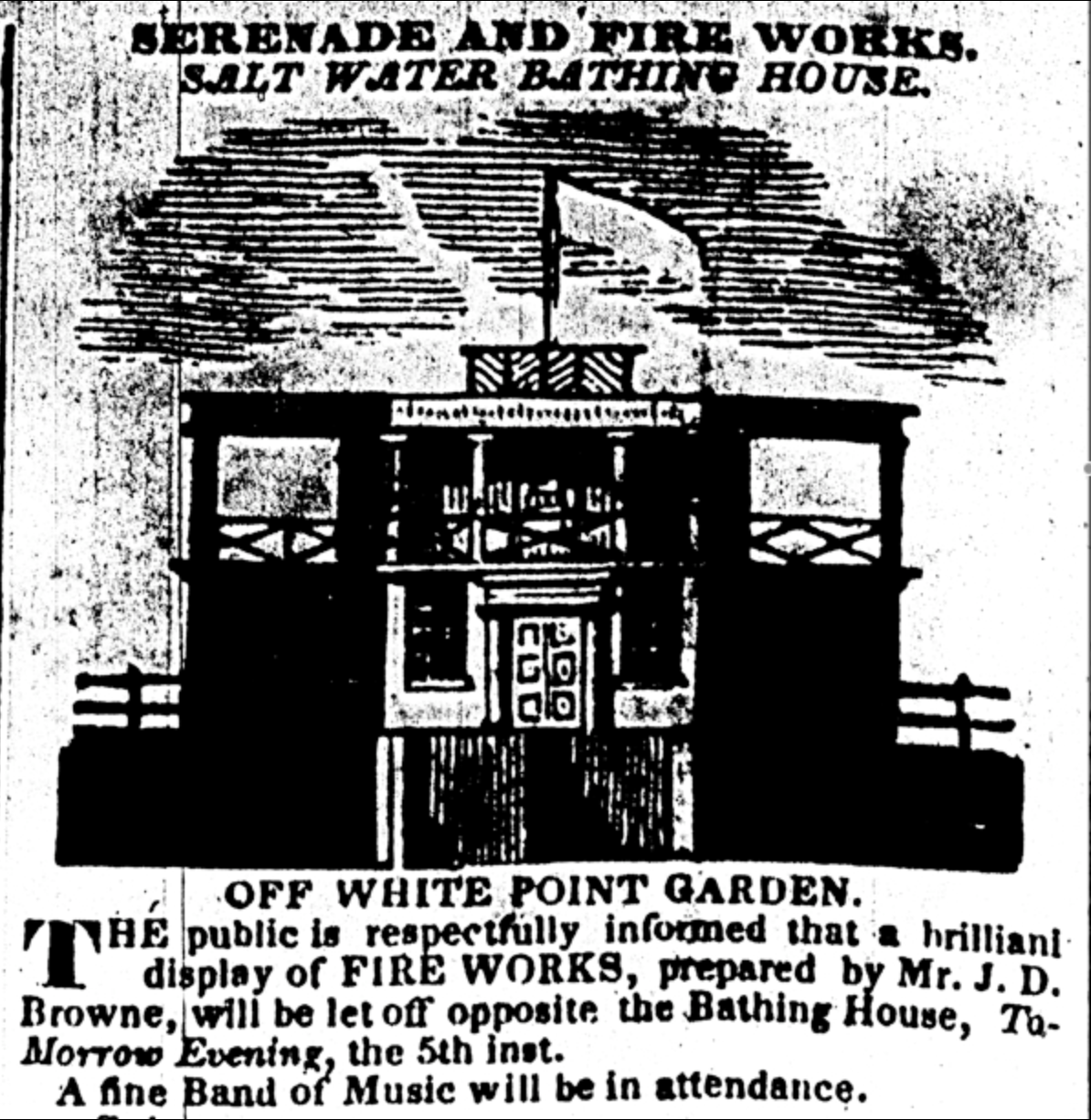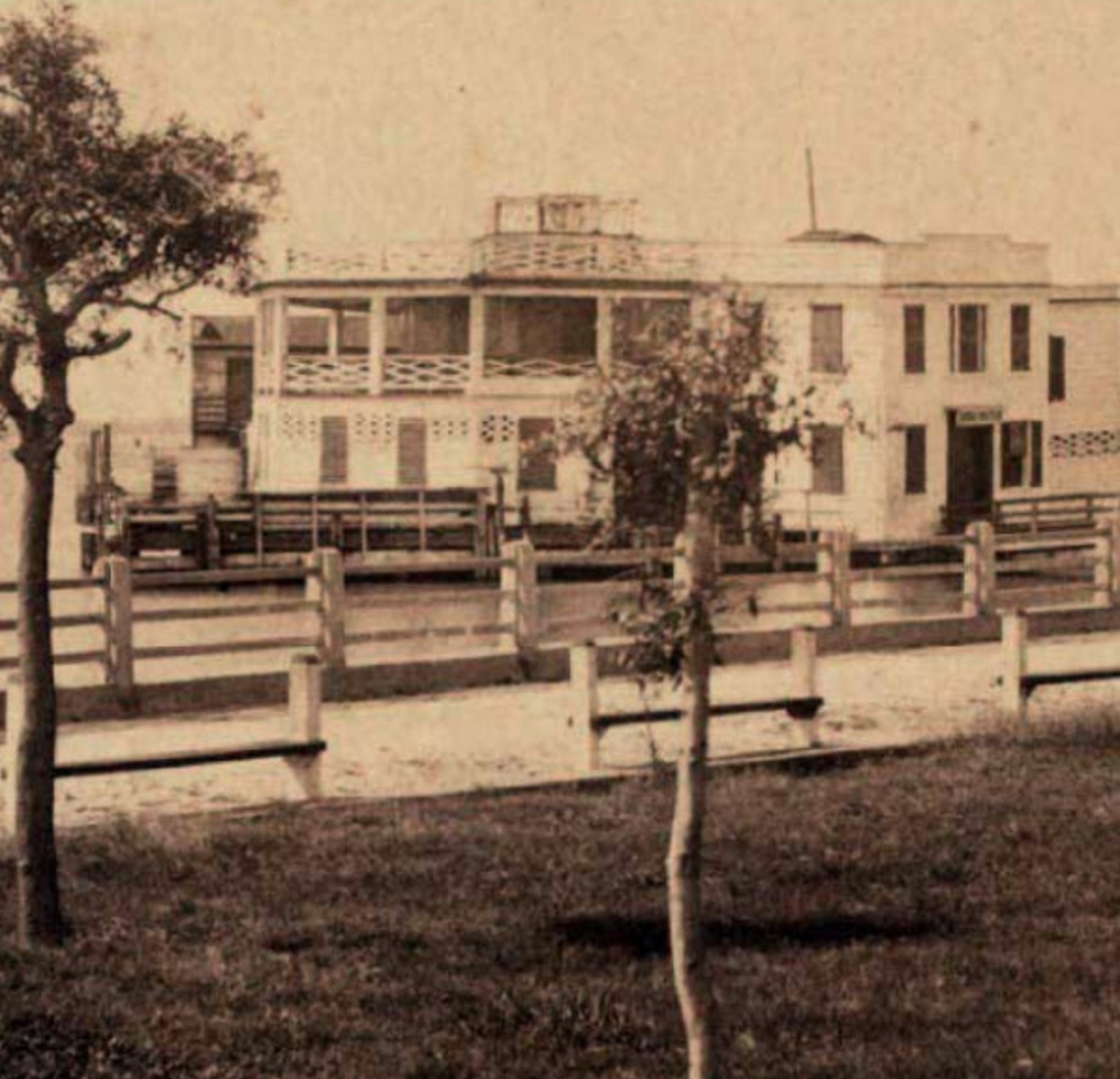Published August 4, 2025
Making a Splash in Charleston History

Did you know that one of Charleston’s very first bath houses wasn’t on land at all? According to a City Gazette ad from June 9, 1814, this early bath house actually floated about 100 yards off the shore and was connected to East Bay Street by a bridge near the end of Atlantic Street. The original plan was ambitious—“a circular floating bathing house 250 feet in circumference, with forty spacious private rooms lit by Venetian windows, and a large central swimming pool.” While it didn’t quite live up to that grand vision, it quickly became a local favorite.
By July 1, 1815, repairs had to be made to the bath house. The Gazette happily reported the structure had been hauled back out to its moorings—this time better equipped to stay afloat and (thankfully!) designed to keep out “marine animals which were so troublesome last year.” Pesky jellyfish? Curious sharks? We can only guess. If anyone ever revives this idea, let’s make sure that design detail is top priority!
Fireworks and Band Concerts

Advertisement, Charleston Courier, September 4, 1843
But perhaps the most impressive bath house in Charleston’s history stood just off White Point Garden. Built in 1842, it was a community favorite and a hub of summer activity. Some maps place it in line with Meeting Street; others suggest it sat closer to Church Street. Wherever it stood, it was beloved.
The saltwater baths were seen as beneficial for health and recreation, and children were even given swimming lessons there. In a generous gesture, the owner opened the facility free of charge to orphanage children every other week. A promenade wrapped around the swimming area, and during evening band concerts in the park, musicians would often come play in the upper level—sometimes accompanied by fireworks lighting up the sky. What fun!
Beating the Heat off White Point Garden

The Miriam and Ira D. Wallach Division of Art, Prints and Photographs; Photography Collection, The New York Public Library. "Bathing house and Battery, Charleston, SC." The New York Public Library Digital Collections.
Throughout the 1800s, Charlestonians flocked to saltwater bathing houses for fun, fresh air, and the occasional seawater-soaked health boost. These quirky structures were perched beyond the low-water mark in the harbor, connected to land by bridges that were either charming or terrifying, depending on the tide. And, in true 19th-century fashion, there were separate facilities for men and women.
Between 1812 and 1893, several bathhouses popped up around the scenic White Point Garden area—because why not enjoy your dip with a dramatic view of the Battery? Unfortunately, their business plan seemed to follow a predictable three-step model: build it, bathe in it, watch it get destroyed by the next hurricane.
Charleston’s storms had a flair for the dramatic and a deep-seated grudge against wooden buildings. Hurricanes in 1835, 1854, 1874, and the ultimate showstopper in 1893 took turns turning bathhouses into driftwood. By the end of the century, the ocean had won—and the bathhouses were little more than soggy memories floating in Charleston’s tempestuous past.





